Fungi Season Underway?
Is the fungi season underway? I hope so. Or is the weather about to go dry on us? Funny lot, mycologists, even amateur ones. Scanning the sky for rain clouds rather than blue skies! A deluge was promised us today and all we got was a little drizzle. Weather forecasters - you can't trust them!
The intermittant showers in the past few weeks have encouraged a few to appear locally, mostly regular species in their regular sites. Geoffrey Kibby's new key on Bolete has allowed me to reassess old records of Boletus erythopus and reticulatus at Fryerning Churchyard, Xerocomus cisalpinus in a local lane and Leccinum scabrum at Fryerning Hall Fishing Lakes. All present and still correct I am glad to say! So too, Inocybe asterospora; keyed out in Alan Outen's and Penny Cullington's new key tothat genus. Best find so far has been the Jewelled Amanita, Amanita gemmata (illustrated here), found growing under oak, birch and other deciduous trees at Fryerning Hall Fishing lakes. The yellowish-cream cap with a striate margin and scattered veil remnants (present only in the centre of the cap on this older specimen), fugacious (remnant) ring, broad basal bulb encased in a short volva, and spore size (9-10um on twelve measured) key it out as this species but a full description has been taken and the specimens retained. The deeply concave cap on this specimen may be attributable to the dry weather.This is my second record for this species locally.
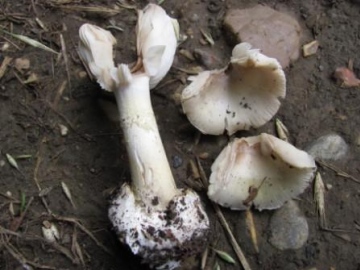
How about you Mary - have you had any luck? Adonis Ladybird (Hippodamia (Adonia) variegata)
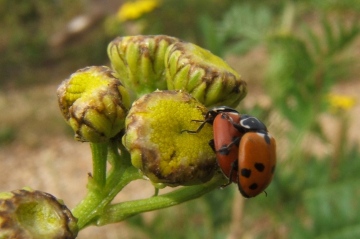
On Friday 5.8.11 a visit was made to Skinners Wall, the sea wall running from Mannintree to Cattawade (area covered TM105319 to TM104321)
With me was my grandson Samuel, who has an interest in photography and natural history and whom I am trying to encourage. I have been involved for a number of years in assisting in Paul Mabbots ladybird survey and this one of the sites I try to cover.
We came across clumps of Tansy and had pointed out they were good for hiding places for various insects including ladybirds, when a question came back why some 7-spots were smaller than others.
We were infact looking at Adonis' Ladybirds which are of course smaller and less rounded than 7-Spots, but at first glance very similar.
It was estimated there were 100 plus on various patches of Tansy with 30 plus 14-spots together with 300 plus 7-Spots, although these were more widespread (37 counted on one flower tub in the town alone)
I have placed this record so that anyone interested may visit, but my records will be passed to Paul at the end of the year as usual.
I note that on the species account for Adonis there are no recent records shown. old Garden Tiger records
Thanks Graham,
funny you should mention Garden Tiger. I was in the Lee Valley Ranger office this afternoon when the same friend brought in a Garden Tiger moth, deceased. He said it was alive when he found it, at Gunpowder Park just south of Waltham Abbey town. These are probably still resident in the valley but its ages since I did any moth trapping. I noticed an old record of a caterpillar I found at Walthamstow Marshes (05/06/99) today and I used to get occasionals in the moth trap at Essex Filter Beds, eg 1 on 15/08/96; 26/07/97
Regards, Dave Jersey Tiger
Dave
Robin Barfoot, of the Essex Moth Group, has recently reported catching one at Woodford Green. Apparently he gets them every year nowadays as they have colonised parts of the London area. None have ventured as far as Ingatestone, though; indeed, I've only had one Garden Tiger locally in the past twenty years. I used to collect their "woolly bear" caterpillars and rear them when I was a kid; they were everywhere in those days. I could go on - one of the penalties of increasing age and a long memory!
Graham Smith Any more Jersey Tigers?
I've uploaded a picture of a Jersey Tiger sent to me by a friend. It was taken on Friday 29th July at The WaterWorks (former Essex Filter Beds) in Leyton, East London. It landed on him several times, so he took a few photos but only with a camera phone, hence not picture perfect. Naturally I'm wondering if there are any other reports about at the moment.
Dave Stow Maries Aerodrome
Stow Maries Aerodrome is situated on a beautiful hilltop site overlooking the River Crouch. It was built to help defend Essex coastal towns against attack by Zeppelins and Gotha long range bombers during the 1st World War. Remarkably, the buildings have survived for nearly one hundred years (although many are in a state of disrepair) and the new owners - along with a team of dedicated volunteers - are in the process of restoring them to their original condition, using old maps, pictures and documents. The airstrip has also been reinstated and is used regularly by light aircraft. There is a small museum and a recently installed war memorial. Sadly, many of the young men whose names are inscribed on it died in accidents rather than battle, the aircrraft they were flying being fragile and their engines temperamental It is a wonderful place to visit - quiet, peaceful and very evocative - and the new owners have set out improving the site for wildlife by creating a wild flower meadow, new woodland, bird feeding areas and a pond, with more planned. Russell Savory, who part owns and runs the site, is also a brilliant bird photographer and some of his work lines the walls of the 'mess'. He has recently joined the Club as a corporate member and is keen for naturalists to visit the site and do recording work. It is open to the public most days and details of how to get there can be found on their website. Simply type is Stow Maries Aerodrome on Google. A charge of £4 is normally made - which helps fund the renovation work - money which I feel sure you will find is well spent.
Have been visiting the site regularly this summer recording birds, plants, moths, dragonflies, butterflies and what not. Recent sightings have included a Wall Brown in May, Marbled White in June and Small Red-eyed Damselflies on the pond in July while the moth trap has yielded a number of interesting species including Four spotted Footman and Kentish Black Arches. Unusual species apart, it is simply a wonderful place to potter, and there are a number of ancient bridleways and footpaths surrounding the site, should you desire a longer walk. These three hoverflies, Sphaerophoria scripta, Episyrphus balteatus and Dasysyrphus albostriatus were phptographed last week. The second of these, known as the Marmalade Fly, is a partial migrant, huge numbers sometimes visiting these shores. A few years ago I remember visiting the Green Man at Bradwell Waterside with friends one beautiful August day and being astonished that there was no one sitting in the garden. We soon found out why; within two minutes of sitting down I counted 32 Marmalade Flies seated on the rim of my beer glass! Being naturalists, we stayed and enjoyed the spectacle rather than retreating indoors of course!
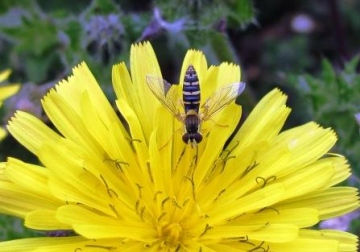
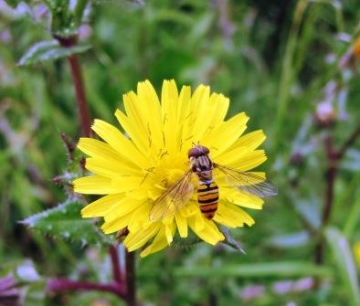
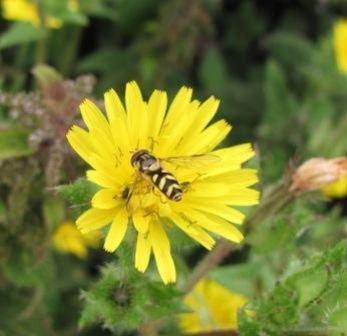
|
|
Archives:
May 2020
Aug 2019
Jan 2019
Sep 2018
Jul 2016
Oct 2015
Jul 2015
May 2015
Apr 2015
Mar 2015
Feb 2015
Jan 2015
Dec 2014
Oct 2014
Sep 2014
Aug 2014
Jul 2014
May 2014
Apr 2014
Mar 2014
Feb 2014
Jan 2014
Dec 2013
Nov 2013
Sep 2013
Aug 2013
Jul 2013
Jun 2013
May 2013
Apr 2013
Mar 2013
Feb 2013
Jan 2013
Dec 2012
Nov 2012
Oct 2012
Sep 2012
Aug 2012
Jul 2012
Jun 2012
May 2012
Apr 2012
Mar 2012
Feb 2012
Jan 2012
Dec 2011
Nov 2011
Oct 2011
Sep 2011
Aug 2011
Jul 2011
Jun 2011
May 2011
Apr 2011
Mar 2011
Feb 2011
Jan 2011
Dec 2010
Nov 2010
Oct 2010
Sep 2010
Aug 2010
Jul 2010
Jun 2010
May 2010
Apr 2010
Mar 2010
Feb 2010
Nov 2009
Oct 2009
Aug 2009
Jul 2009
Jun 2009
May 2009
Apr 2009
Mar 2009
Feb 2009
Jan 2009
Nov 2008
Oct 2008
Sep 2008
Aug 2008
Jul 2008
Jun 2008
May 2008
Apr 2008
Mar 2008
Feb 2008
Jan 2008
Dec 2007
Nov 2007
current posts
|























